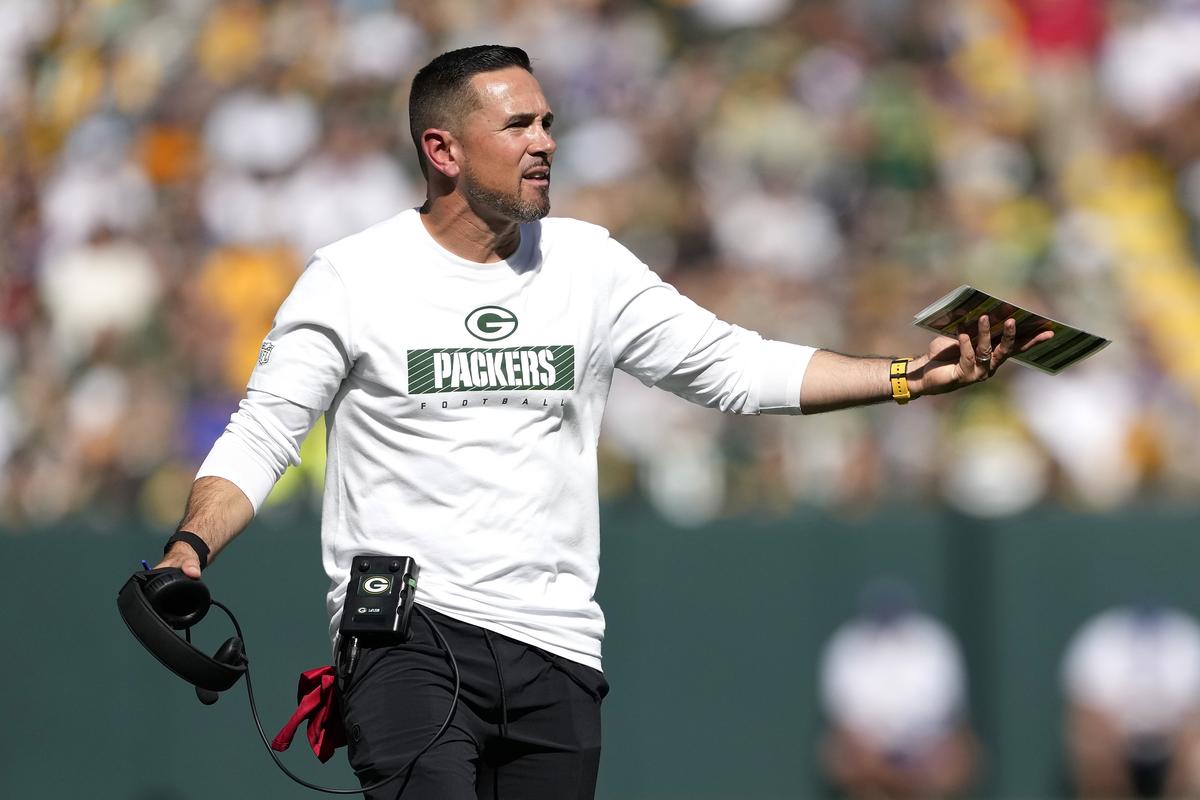By most people’s thinking, both the Green Bay Packers and Minnesota Vikings have had strong off-seasons.
Both teams addressed their needs, deployed their respective draft capital well, and rounded their rosters into form to compete once again in the division and across the league.
Not everyone was a fan, apparently.

ESPN’s Seth Walder was tasked with assigning ‘offseason grades’ to all 32 NFL franchises, and both the Packers and Vikings came home with surprisingly low grades.
Per ESPN.com:
Biggest move: Signing G Aaron Banks
Move I liked: Drafting WR Matthew Golden at No. 23
Move I disliked: Signing Banks
The Packers’ offseason featured two headlines — they finally drafted a first-round wide receiver, and they spent big on Banks. Let’s take those in reverse.
Banks, a former 49ers guard, signed a four-year deal that averages $19.25 million per year with $27 million fully guaranteed. The issue I have is that we don’t have evidence that Banks is anywhere near that caliber of player. Banks is coming off his best season according to win rates, but he ranked only 38th out of 64 guards in pass block win rate (92%) and 46th in run block win rate (69%).
San Francisco 49ers v Arizona Cardinals
The top of the guard market was frothy, but the Packers paid for not having patience, as Mekhi Becton, Kevin Zeitler and James Daniels all signed for $10 million or less. I would much rather have those players at their price than Banks at his.
Golden gives the team No. 1 WR upside it could use and helps make up for Christian Watson — who tore his ACL in the regular-season finale — possibly not being available for much of this season. Green Bay already had a group of solid receivers in Jayden Reed, Romeo Doubs, Dontayvion Wicks (I’m still a believer) and Watson, though entering the offseason running back Josh Jacobs said he believed the team needed a “guy that’s proven to be a No. 1 already.” Golden is not that, but first-round receivers offer that kind of potential.
READ MORE: Minnesota Vikings Pass Rusher Turner Victim of Costly Scam
Biggest move: Sticking with QB J.J. McCarthy as their starter
Move I liked: Sticking with McCarthy
Move I disliked: Signing DT Jonathan Allen
What to do at quarterback was the biggest, most important decision the Vikings had to make. There were essentially three options — retain Sam Darnold, sign Aaron Rodgers or start McCarthy, their 2024 first-round pick.
They chose the last option, which I feel is correct. Darnold was coming off a career season, but his performance was overrated by the win-loss record. Despite having an elite playcaller as head coach and the league’s best wide receiver, Darnold ranked 14th in QBR last season — a number that includes his disastrous Week 18 game against the Lions but doesn’t factor in his similarly dreadful wild-card game against the Rams.
Ultimately, Darnold’s collapse made the choice easy. And the Vikings were correct to parry interest from Rodgers, who has not played well since 2021. Minnesota is in a far different position than the Steelers thanks to McCarthy.
The Vikings are also projected to gain a third-round compensatory pick for losing Darnold and a fourth for losing Daniel Jones, per OverTheCap.com, draft additions that are not trivial. But while I approve of the team’s biggest choice this offseason, I was less fond of many of Minnesota’s other decisions.
Will Fries is a promising guard, but handing him a five-year deal that averages over $17.5 million per season with $44 million fully guaranteed, per Roster Management System, seems incredibly rich for a player who has recorded average-ish pass block win rates in each of the last two seasons. Guards were hot, but, as has been mentioned earlier, several quality guards signed for $10 million per year or less.
Cleveland Browns v Indianapolis Colts
Allen is 30 and declining; he had a below-average 8% pass rush win rate as a defensive tackle last season after being a top-10 player in the category a few seasons ago. Yet Minnesota paid him $17 million per year on a three-year deal (albeit with only $23.3 million fully guaranteed, per OverTheCap.com). That is pricier than the deal the Commanders cut Allen on and makes me think the Vikings should have traded a conditional seventh-round pick to Washington and taken Allen’s old contract.
One could certainly understand the thought process while disagreeing with the grades.
At worst, the Minnesota Vikings are a B for me. They addressed their needs, enhanced their limited draft capital, brought back the majority of their key free agents, and navigated the QB change to JJ McCarthy in the process.
For the Packers, I would also have them in the B range. While the free agent signings of Banks and CB Nate Hobbs were pricey, the team appeared to draft well and round out the roster for another playoff push.
As always, we’ll just have to wait and see if either or both teams did enough to once again be one of the seven NFC teams to punch their ticket to the postseason.
The Vikings and Packers both open the preseason at home on Saturday, August 9th.
Source: ESPN.com – Offseason Grades
The 23 Minnesota Vikings in the Pro Football Hall of Fame
Gallery Credit: Bert Remien
The Top 10 Teams in College Football National Title Odds
Gallery Credit: Bert Remien
Every First Overall NFL Draft Pick Since the 2010 Season
Gallery Credit: Bert Remien
